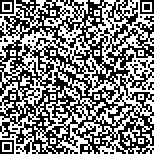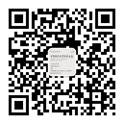| 引用本文:崔旭,陈红芽.麻醉专业住院医师神经阻滞规范化培训的经验探讨[J].中华医学教育探索杂志,2016,15(12): |
| 麻醉专业住院医师神经阻滞规范化培训的经验探讨 |
| Experience of standardized training of nerve block for anesthesia residents Cui Xu, Chen Hongya,Department of Anesthesiology, Beijing Tongren Hospital, Capital Medical University, Beijing100730,China(Cui X,Chen HY) |
| DOI: |
| 中文关键词: 麻醉专业 住院医师 规范化培训 神经阻滞 |
| 英文关键词:Anesthesiology Resident Standardized training Nerve block |
|
 |
| 基金项目: |
|
| 摘要点击次数: 399 |
| 全文下载次数: 68 |
| 中文摘要: |
| 神经阻滞是麻醉专业住院医师必须掌握的基本技能之一,也是规范化培训的难点之一。为了在病例数有限的情况下最大限度的提高麻醉专业住院医师神经阻滞的学习效果,需要不断丰富教学手段和教学方法。在基础理论授课中,通过三维人体解剖技术加强住院医师对神经解剖的理解;在神经阻滞操作中,利用超声引导下神经阻滞技术和模拟培训提高住院医师的操作能力;在具体临床病例麻醉管理中,引入基于问题式的学习教学法增强住院医师发现问题、解决问题的能力。 |
| 英文摘要: |
| Peripheral nerve block technique is one of the basic skills necessary to residents and difficulties in resident standardized training in the department of anesthesiology. Though there are a limited number of cases, it is necessary to improve the quality of standardized training by constantly enriching teaching technologies and methods. Human 3D anatomy is used for theory teaching to maintain comprehension of nerve anatomy; Ultrasound-guided nerve block technique and ultrasound simulation training are used for nerve block practice to improve nerve block skills; Problem-based learning teaching method is introduced in nerve block cases to increase the ability of clinical cases management. |
|
查看全文 查看/发表评论 下载PDF阅读器 |
|
| 关闭 |
|
|
|
